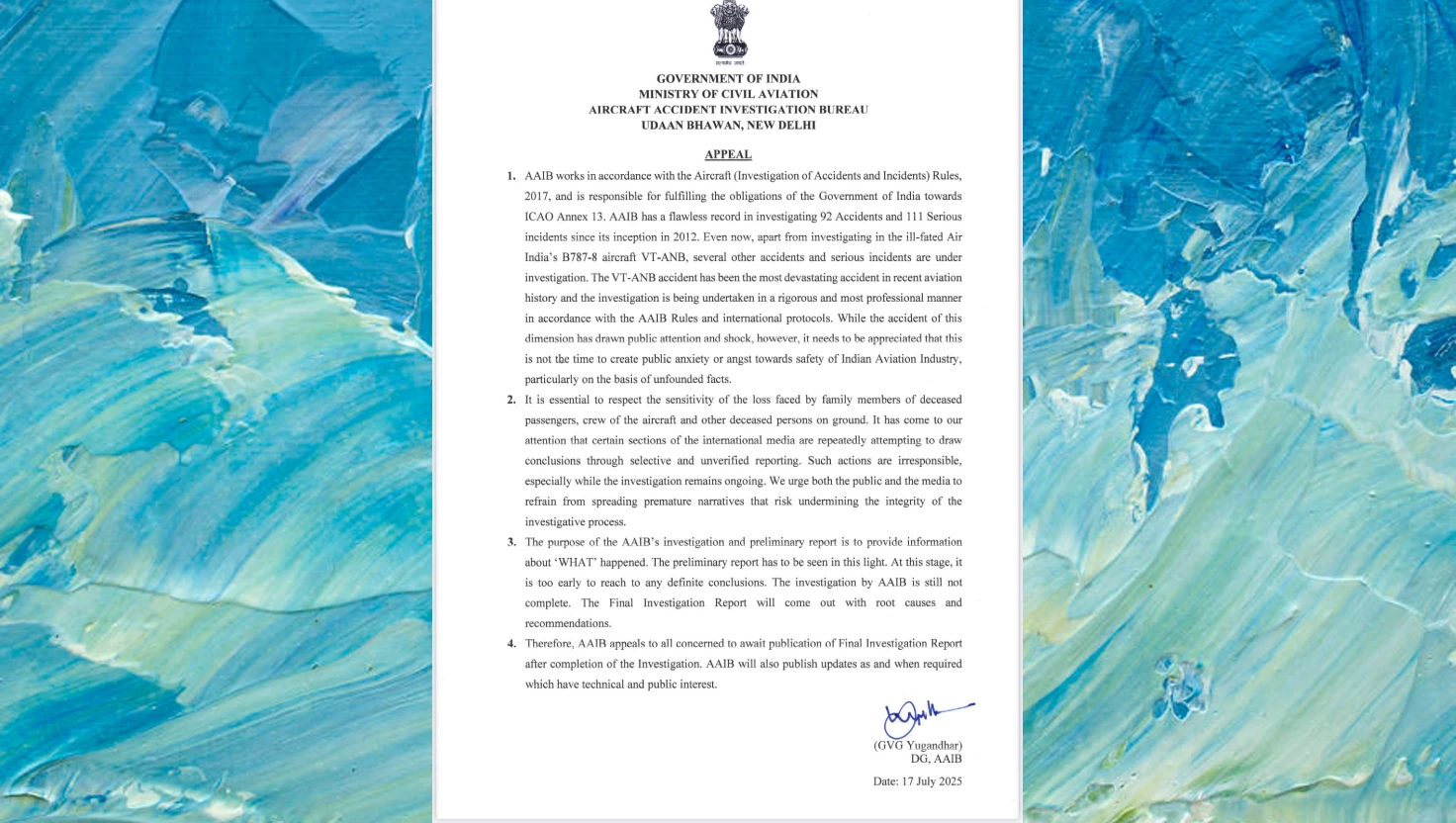Nifty Falls Below 25,000 as IT Sector Slumps and US Credit Downgrade Weighs on Sentiment

Nifty ends below 25,000 as Moody’s US rating downgrade sparks sell-off.
Indian stock markets slipped for the second day, with the Nifty closing below 25,000, dragged down by IT stocks and Moody’s downgrade of the US credit rating.
India’s benchmark equity indices declined for the second straight session on Monday, with the Nifty 50 falling below the 25,000 mark amid broad losses in information technology shares and concerns triggered by Moody’s downgrade of the United States’ sovereign credit rating.
The BSE Sensex dropped by 271 points, or 0.33%, to close at 82,059.42, while the NSE Nifty 50 lost 74 points, or 0.30%, ending the session at 24,945.45. The decline followed a wave of selling in technology stocks, which bore the brunt of global risk-off sentiment.
Despite the fall in headline indices, broader market activity remained relatively strong. According to exchange data, 2,531 stocks advanced while 1,565 declined on the Bombay Stock Exchange (BSE), indicating underlying market resilience.
IT Stocks Lead Decline After US Rating Cut
The sharpest losses came from the information technology sector, which dropped over 1.3% during the session. This followed ratings agency Moody’s Investors Service lowering the United States’ sovereign credit rating from Aaa to Aa1, citing concerns over the country’s growing debt burden, now exceeding $36 trillion.
Major Indian IT companies, which generate a significant portion of their revenues from US clients, saw declines. Shares of Infosys fell 2.01% to Rs 1,557.90, making it one of the top laggards on the Nifty.
“Indian stocks witnessed a volatile session, with the Nifty and Bank Nifty decoupling from each other. The Nifty slipped lower as IT and Oil & Gas stocks came under profit-taking pressure,” said Rupak De, Senior Technical Analyst at LKP Securities.
Autos and Midcaps Show Strength
While IT stocks dragged the index down, certain segments of the market showed resilience. Automobile shares outperformed, with Bajaj Auto rising 4.10% to Rs 8,830 and Hero MotoCorp gaining 0.89% to Rs 4,384.
Financial and utility stocks also posted modest gains. Shriram Finance climbed 1.85% to Rs 677.80, and Bajaj Finance advanced 0.88% to Rs 9,248. In the utilities segment, Power Grid Corporation rose 1.35% to Rs 304.25.
Among notable decliners were Grasim Industries, which fell 2.90% to Rs 2,723, and Tata Consumer Products, which slipped 1.54% to Rs 1,046.20.
Despite the fall in the benchmark indices, the Nifty Midcap 100 ended slightly higher, gaining 0.08% to 57,105.45, while the Nifty Next 50 index rose 0.49% to 67,405.80.
Ajit Mishra, Senior Vice President of Research at Religare Broking, described the current trend as a “healthy pause” in the broader market. “The broader market also witnessed a mixed performance, as the small-cap index gained over half a percent, while the mid-cap index ended flat,” he noted.
Market Indicators Signal Heightened Caution
Investor caution was reflected in the volatility index. The India VIX rose nearly 5% to 17.38, suggesting increased nervousness amid ongoing global uncertainties.
The Indian rupee showed strength against the US dollar, appreciating by 10 paise to settle at 85.40. The currency’s gains were supported by lower international crude oil prices and a softening dollar.
From a technical perspective, analysts suggest the Nifty may be entering a consolidation phase. “Technically, Nifty formed a small red candle on the daily scale. However, the index is still holding above the breakout zone of 24,800–24,850, which indicates underlying strength,” said Hrishikesh Yedve, AVP Technical and Derivatives Research at Asit C. Mehta Investment Intermediates.
Rupak De of LKP Securities added, “The index appears to be in a consolidation phase, which may continue for the next few days. The Nifty could remain under pressure unless it reclaims the 25,000 level. On the downside, it could drift toward the 24,800–24,750 zone.”
Outlook: Eyes on Banks and Earnings
Looking ahead, analysts maintain a cautiously optimistic view. Vinod Nair, Head of Research at Geojit Financial Services, said: “Despite the profit booking, sustained foreign institutional investor inflows, underpinned by favourable macroeconomic conditions, are expected to uphold overall market optimism.”
Banking shares could drive the next leg of market gains. “Banking now merits more attention following its recent consolidation phase, as it could lead the next leg of the rally and help the Nifty move towards the 25,200 mark and beyond,” said Ajit Mishra.
Among sectoral indices, Nifty Realty was the top performer with a gain of 2.2%, followed by PSU Banks and the Pharma index, which rose 1.5% and 0.5% respectively.
Investors are likely to focus on upcoming corporate earnings announcements, global market cues, and movements in foreign fund flows as primary indicators for the short-term direction of Indian equity markets.
Global Headwinds and Domestic Trends
Moody’s downgrade of US creditworthiness has injected fresh volatility into global financial markets, including emerging economies such as India. Indian IT firms, with substantial exposure to North American clients, remain particularly sensitive to such developments.
Domestically, the Indian economy continues to show signs of resilience, supported by strong consumption, easing inflation, and active participation from retail investors. However, market volatility is expected to persist amid a mix of global macroeconomic concerns and company-specific earnings results.

Reliance Retail acquires Kelvinator, The Coolest One
Reliance Retail has purchased the Kelvinator brand from Electrolux for nearly ₹160 crore, aiming to strengthen its position in India's consumer durables market.
| 2025-07-19

Saiyyara has shattered every myth about launching newcomers. No big names, no big PR
Madhur Bhandarkar praises debut film 'Saiyaara' for its raw talent and storytelling, marking a shift in Bollywood's approach to newcomers.
| 2025-07-19

India slams reports blaming pilots for Air India crash
India's AAIB disputes US media assertions regarding Air India AI 171 crash, highlighting ongoing investigation and sensitivity towards victims' families.
| 2025-07-18

India Secures Four-Wicket Win in ODI Series Opener Against England
India achieves a four-wicket victory over England in the ODI series opener, led by Deepti Sharma's unbeaten 62 runs.
| 2025-07-17

Air India inspection claims no problems found with Boeing 787 fuel control switches
Air India has conducted thorough inspections of its Boeing 787 fuel control switches, reporting no problems following a DGCA directive.
| 2025-07-17




